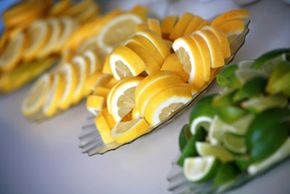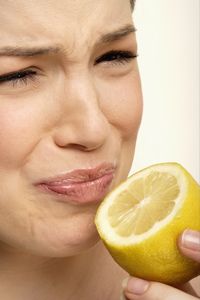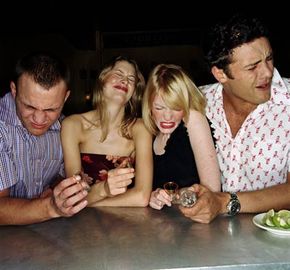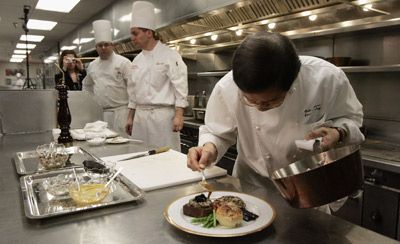Think of all the people who would love to enjoy sweets without thecaloriceffects. Because it removes the need for sugar, miraculin could have potential applications fordiabeticsand for those who want tolose weightbut can't stick to their blanddiets. Additionally, miracle fruit growers report that manycancerpatients seek out the fruit -- some people find it removes the metallic taste that's sometimes a side effect of chemotherapy [source:Slater].The U.S. Army even researched the berry, perhaps with the thinking that miraculin could make even the most unpalatable rations edible [source:Cannon].
One country using miracle fruit to appeal to calorie counters is Japan. The Miracle Fruits Café in Tokyo offers dessert items that contain no more than 100 calories. All of the desserts are bland and bitter on their own, but once the miracle fruit is consumed, cakes and ice cream become as scrumptious as their sugary counterparts [source:McCurry].
饭吃水果咖啡馆是昂贵的bec奇迹ause miracle fruit can rot very easily. However, one Japanese food importer has been able to freeze-dry the berries. Another important breakthrough may have come in 2006, when Japanese researchers announced they had genetically engineered lettuce to produce miraculin [source:Rowe].Before this accomplishment, scientists had been unable to produce miraculin in bacteria, yeast or other plants. If miraculin could be produced in more forms than miracle berries, it may have a chance for more widespread use.
One place miraculin probably won't get widespread use, though, is the United States. It might have been a possibility: In the 1970s, businessmen Robert Harvey and Don Emery formed the Miralin Company with the aim of using miraculin to manufacture products for diabetics. The men experimented with miraculin tablets,chewing gumand flavored drinking straws [source:Slater].According to Harvey, their contact with the Food and Drug Administration (FDA) led them to believe that the agency would classify the berry as "generally recognized as safe" [source:Fowler].
Despite the company's success with miraculin, the backers of Miralin wanted Harvey and Emery to look beyond just the diabetic market. In 1974, Miralin developed miracle berry popsicles. Boston schoolchildren were asked to choose between a sugared version and the miraculin version, with the miraculin-flavored popsicle winning every time [source:Slater].
After the popsicle testing, Harvey noticed he was being followed. Harvey reported that a car was driving slowly by the Miralin offices, slowing to take photographs, and Harvey says he was followed home from work one night [source:Fowler].Later that year, the Miralin offices were ransacked, and files with information for the FDA scattered, according to Harvey. The night before Miralin was to start a major product launch, the FDA sent a letter indicating that the berry should instead be classified as a food additive. The berry's new status would have required years of testing that Miralin couldn't afford, and the company folded.
Harvey and Emery have been unable to determine why the FDA changed its mind. Emery suspects a competing industry pressured the FDA [source:Fowler].The Sugar Association has denied any involvement, and the Calorie Control Council, an association of artificial sweetener manufacturers, has refused to answer questions [source:Fowler].
The FDA's ruling means that miracle fruit can be legally grown, but it can't be used in food. As a result, the berry itself has become an underground cult favorite. Turn the page to see how hipsters get high on flavor tripping.








